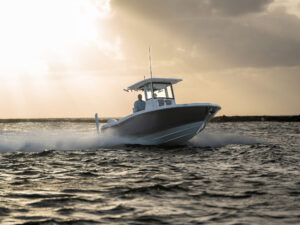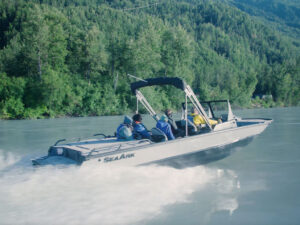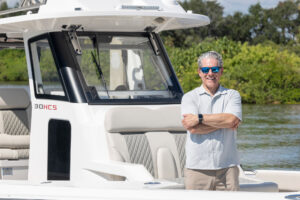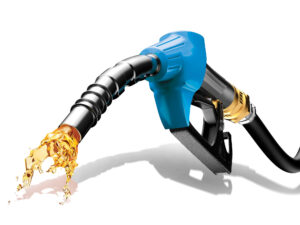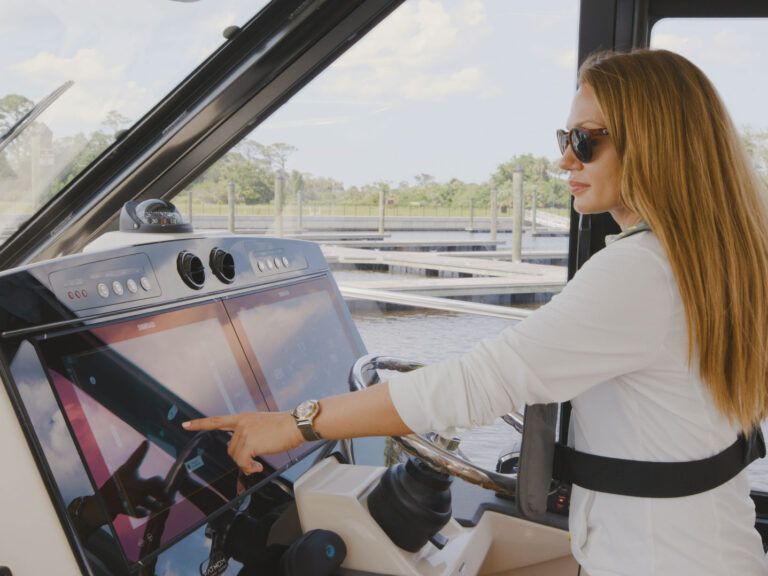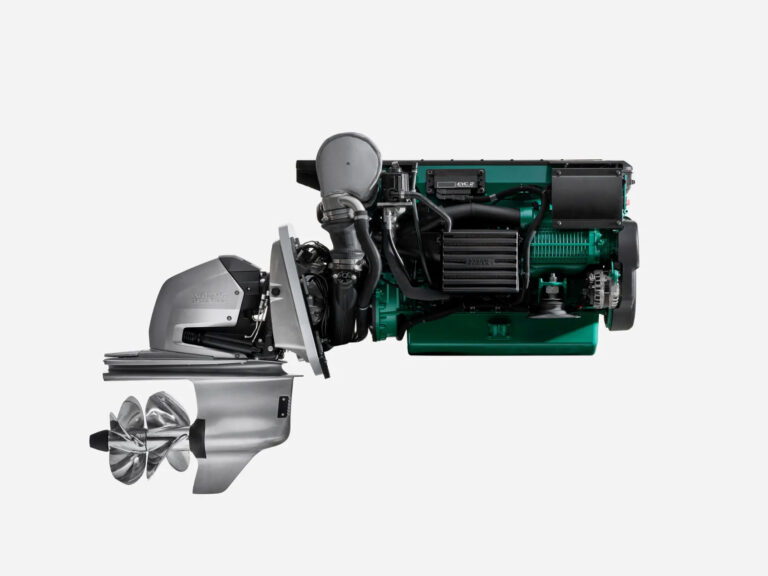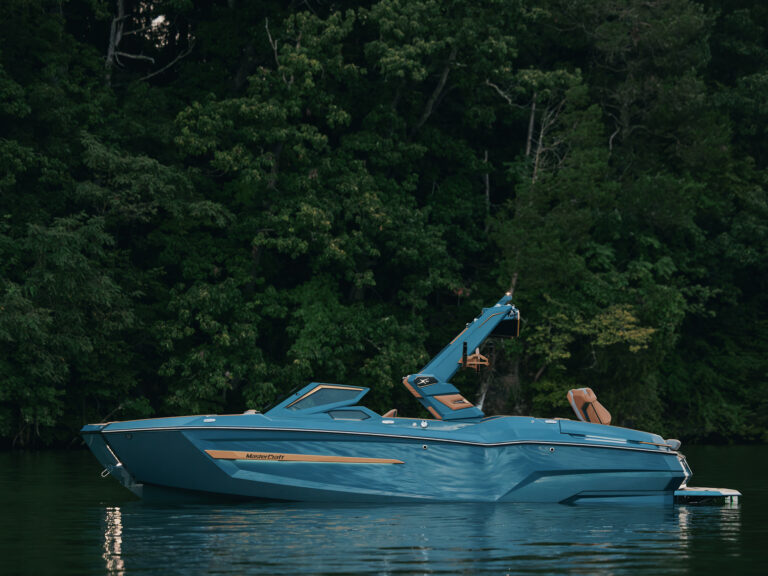
Factor in weather conditions, boat type, number of engines, the type of dock, the direction of approach to the dock, the lake’s level, and the height of the tide, and the number of scenarios that boaters might encounter when docking is downright staggering. This also makes it hard to write about docking: Where does one start?
We will begin with some basics. These are not universal truths guaranteed to get you out of any docking dilemma with grace. They are what we consider to be the foundations of docking any boat — going slowly, understanding how your boat reacts to reverse gear, and using wind and current — and our hope is that they will serve as eye-openers for the new boater and as a worthwhile refresher for the seasoned vet. You can let us know how we did, and share your own docking tips, by tweeting with #nocaptcrunch.
How to Dock: Proper Speed
Never approach a dock faster than you want to hit it. That gem is one of the best pieces of boating advice ever given. Yes, there are scenarios wherein a lot of throttle is required to dock the boat. But most times, going slowly will serve you best.
It will help if you can visualize what’s happening under the water. Going slowly, there is less discharge streaming from the propeller assisting in the turn. And at slow speed there is minimal water flowing past the rudders. Steering is different at slow speed, but you can control the boat.

In going slowly the sharpest turns can be accomplished since the boat will pivot rather than skid like it does when cruising. The trick is to apply a burst of power at just the right time and then go back to coasting. It takes practice to identify how much throttle constitutes a “burst” since it will vary by boat and situation. In this context, a “burst” provides enough rpm to create enough force to change the boat’s direction without adding much, if any, forward or reverse motion. The boat is still moving slowly, even if the engine is briefly revved. Using this principle you can learn to pivot and coast and make your boat respond.
One of the worst-case scenarios is that of the boater who realizes he has made a too-fast approach and suddenly reverses at high rpm to prevent a crash stop. This sets the boat to twisting about. Then, in an attempt to correct the prop-torque-induced twisting, the control handle is returned to forward with even more throttle. But there’s that pesky bulkhead again and so it’s back into reverse. With each “correction,” throttle is increased as the boater cycles between forward and reverse, ending, usually, with a bang and loud language.
It’s better to accomplish this maneuver by making a slower approach. Practice clicking in and out of gear and allowing the boat to coast, rather than staying in gear until you want to stop or change direction. Get comfortable with maintaining the minimum speed required to stay on course. Docking consists of a series of controlled coasts in neutral interrupted by brief spurts or bursts of power in gear between each coast.
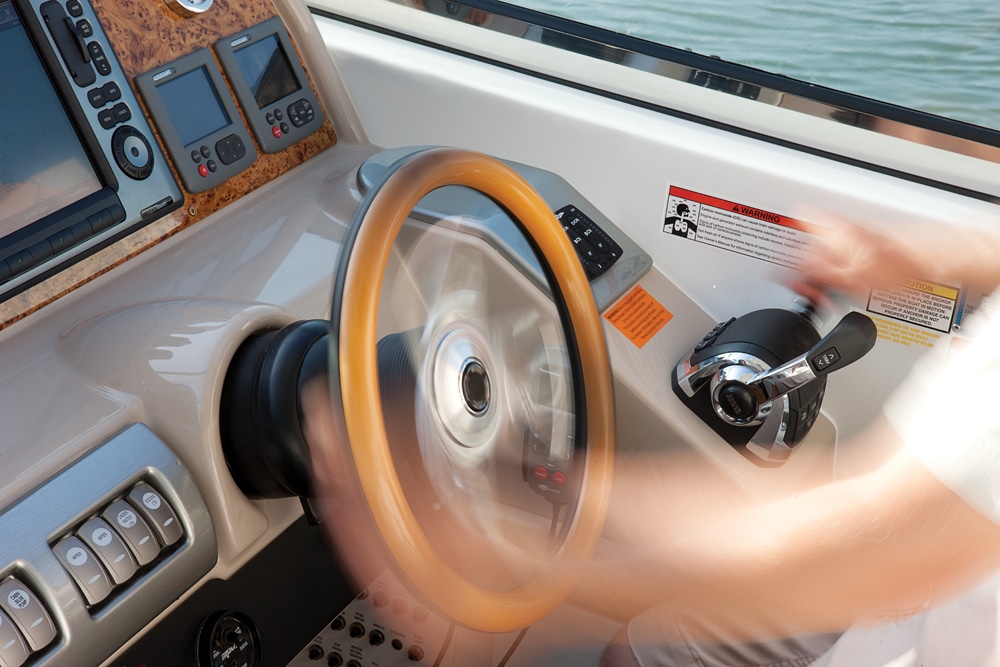
Most propellers are right-hand, meaning that, when viewed from astern, they turn clockwise in forward gear. Left-hand props are the exact opposite, rotating counterclockwise in forward. Boating Magazine
How to Dock: Prop Torque
A propeller induces a sideways force in addition to linear thrust. Let’s take a look at a single, right-hand propeller since most boats have a single engine and most engines swing right-hand props.
“Right-hand” means that the prop revolves clockwise when the engine is in forward gear, as seen from astern of the boat. The sideways component induced by the prop — the prop torque — creates a “kick” or “walk” that makes a boat easier to steer in the direction of its prop’s rotation. That is, the torque from a right-hand prop kicks the transom to the right (starboard) in forward gear and to the left (port) in reverse gear. (For the boat to steer to starboard, the transom must kick to port). Got it? This concept is huge and will help you on the water when putting prop torque to work for you.
Let’s reiterate in blunter terms. Many boaters have complained to us that they can’t stand the prop’s torque. They moan that when they hit reverse, the boat twists over to the side. Every time!
That’s nothing to moan about. That’s your ace in the hole! Since your boat will react the same way when it’s put in reverse every time, the first thing you need to do is learn what that effect is for your boat. Get that down, and it becomes an anchor component for any docking strategy. It’s not a defect — it’s something you can lean on! With practice you build upon it, learning the effects of using more rpm and/or of turning the steering wheel.
The most typical use of prop torque occurs when approaching a bow-in slip and needing to stop without kicking the stern into the boats docked on either side of you. As illustrated, we are talking about a slip without floats between the boats — just pilings and a bulkhead ahead to define the slip.
Once again, let’s take a look at a scenario involving a single-engine boat with a right-hand propeller. Too many times we see boaters come in and apply reverse; in an instant the transom kicks to port and dings the boat docked to the left. At the same time, the bow is swinging to starboard and often strafes across the bulkhead, scratching gelcoat on the bow and bending the bow rail or entangling it in the hose holder or the shore-power pedestal on shore. Or all! (We’ve seen it happen.)
The key to the solution lies in trusting in the way your boat will kick when you place the shifter in reverse. Confident in that, all sterndrive and outboard boaters need to do is counter the kick by turning the wheel (just slightly) opposite of the direction the transom wants to kick. Then apply a burst of throttle (defined earlier) and you’ll counter the kick. That’s a nice advantage of directional thrust.
If you have a single-inboard engine, it’s a bit tougher, since your thrust is always straight and needs to be deflected by the rudder. So for inboard boaters, the “fix” is to also cut the wheel over to the direction opposite the kick and apply a burst of forward throttle to counter the kick.

How to Dock: Using Wind and Current
Wind and current. These most obvious examples of Mother Nature are often thought of as foes, pushing and pulling us out of position. But they are actually our docking friends. We just need to be aware of how they affect our boat and adjust our approach to the dock accordingly.
As in the other examples, the specific scenarios are too numerous to list. Here, we will provide an example that, hopefully, illustrates the main points and makes your learning curve less steep when out on the water.
Now, if you don’t know how to use it, wind blowing against you can be just as adversarial as wind blowing in the same direction you intend to go. For example, it can be difficult to come alongside a dock with an offshore wind blowing you away from the dock. I’m sure many have felt the frustration as a “near perfect” docking attempt ends with the boat 6 feet away from the dock. At that point, frantic shouts and mighty heavings of dock lines often get the job done. But that is hardly seamanlike, and besides, help is not always around.

If you can get a line ashore and looped over a piling or cleat, you can use engine power to “spring” your boat to the dock with control. It need not be tied ashore, as a crew member can tail a loop around a secure point. Attach the spring line to the boat as far aft as you can, at least at midships, and power against it with rudder turned away from the dock. It works great, but practice on an empty dock so you know what to expect. Boating Magazine
What’s needed is a steep approach angle. This cuts the wind resistance and allows your momentum to carry you in closer to the dock without having to bump the engine in gear. Naturally, you’d want to be ready with dock lines since such a wind will blow you right off — no time to dally but certainly no need to run and rush. That’s when people get hurt — if only their pride.
When the wind is with you as you approach the dock, a surprise can await you if you are inattentive. You can make a picture-perfect approach and then get slammed into the dock. The trick is to come in at a shallow angle and basically do a “virtual docking” parallel to the dock but a yard or two away from it. Then, let the wind blow you in. Be prepared with fenders already deployed or in the hands of your crew.
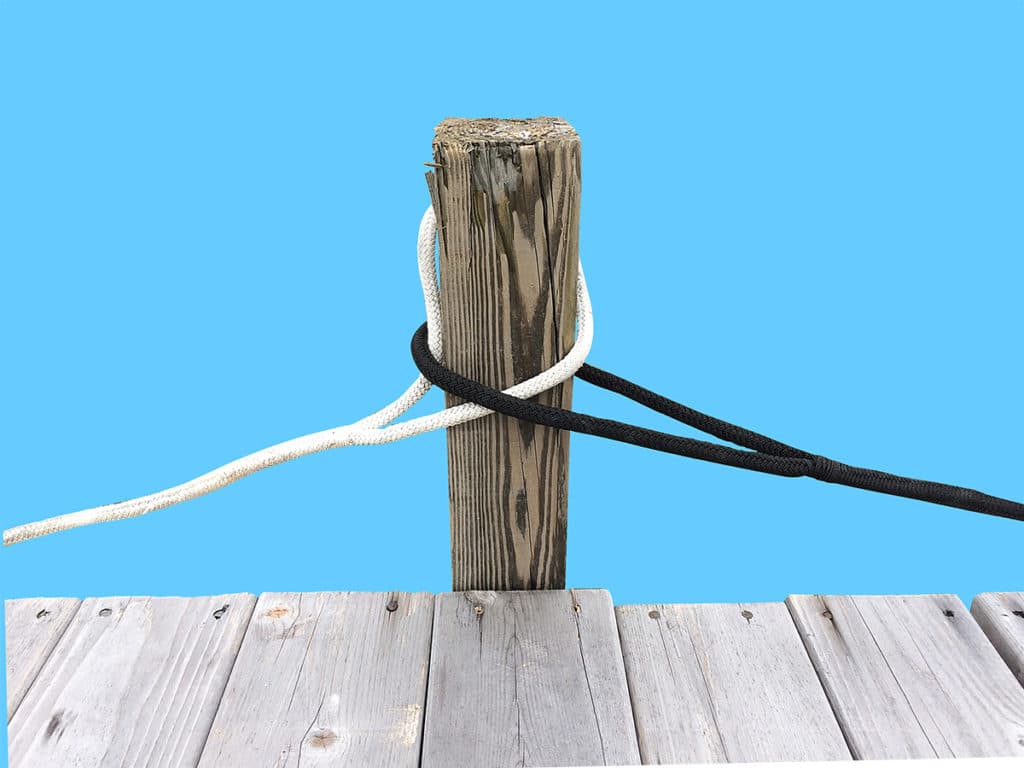
Careful study of this photo will reveal a boating courtesy that is being lost. It’s a method for using the same piling as another boater, and having the ability to place and remove your dock line without disturbing the lines of the other boat. The technique is sometimes called “dipping the loop.” Can you see how it works? Boating Magazine
For more docking tips, check out:
Using “Controlled Coasting” to Dock
How to Dock in the Wind
How to Use Prop Torque

